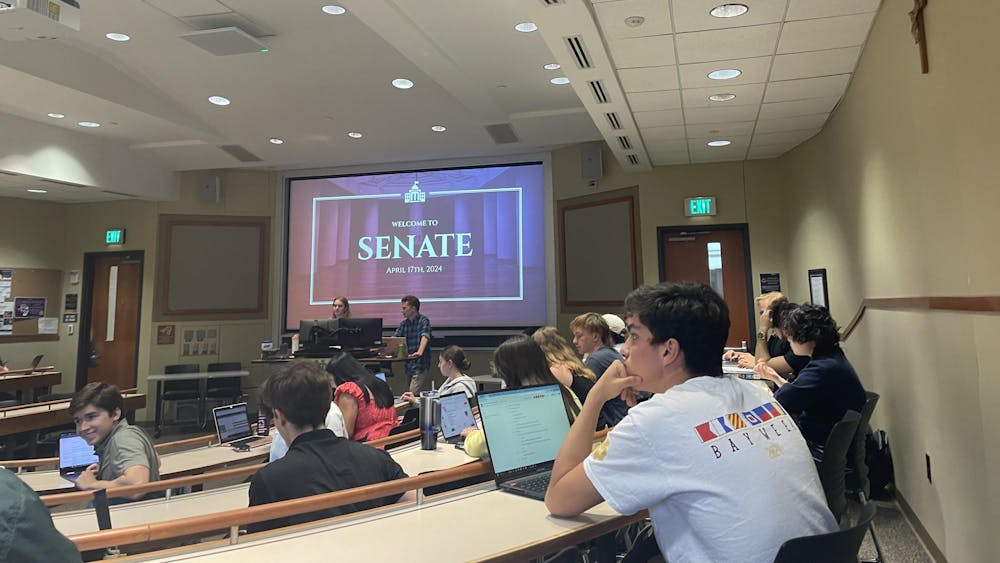What is a city and what is urban? Renowned architect and urban designer Steven Peterson of Peterson-Littenberg Architects said in a lecture Wednesday the two concepts are best defined separately.
Peterson gave a talk titled "The Uniqueness of Urban Design" in Bond Hall, detailing five urban design projects he has worked on over the years in large, dense cities such as Paris, Rome and New York. He also described qualifications of cities versus urban centers.

He began the lecture with a focus on the Forbidden City in Shanghai. It is enclosed by an inner city, which is enclosed by the actual city, with the suburban area on the outside.
"What appears to be one of the great, gridded urban plans ... is actually a very different thing," Peterson said.
The area is broken up into grids, and what appear as blocks today used to be walled-in areas. They were towns within towns in this larger city complex. Despite the large size of the city, Shanghai lacks certain urban qualifications. For instance, every house in the Shanghai region is built the same way, abiding by a principle of repetitive structure. Also, a number of the streets do not run through the city but are cut short by other structures, he said.
"Because everything was aimed at the emperor, [Shanghai] is incomplete as a grid and network as we would expect to find in an American city," he said.
Peterson said he does not believe a highly rational, organized system makes an urban condition. He grew up in Chicago, and he assumed that cities were all like his hometown. In actuality, they contained a distinct fabric, one which did not historically translate to China.
"I don't think China ever had urbanism. It had big cities," Peterson said.

Peterson then shifted to another area of China, the new Beijing region. He said the city features large city blocks and showcases the Chinese fixation on objects. Construction of buildings included gates built into the walls into the center of the structures. Tall buildings also came in clusters, he said.
Through study of Chinese cities, Peterson said he abandoned his assumption that urban centers and cities are the same.
"It's not just a spontaneous evolution of time making things denser and denser, streets and squares. It's actually an invention," he said. "Urbanism is an invention, conscious, deliberate and innovative."
Peterson said the Hudson Yards Plan in New York exemplifies a part of a city with a lack of urban quality. This area needed shaping because it lacked spatial definition and there was fluid anti-space present in the design.
Peterson then outlined what makes a city truly urban. "I want to pose a form-based list of necessary urban ingredients of the dense fabric of western cities," he said.
Peterson listed eight such component.s of urbanism. He said the city block should be solid and closed, and the array of the block should exist in a formed pattern. An interactive urban field, a linked space network, and a volumetric, closed public space are also necessary. Furthermore, a membrane needs to incorporate a street wall as well as a block surface. Architecture should be commingled with the blocks, embedded in the wall, and entangled in a block base. Finally, a sequestered public space should form the precinct.
"Chicago is almost all non-urban," he said. "Alleys destroy the block membrane and street continuity."
He also said the architecture in Chicago does not touch its neighbors as it should, and such a factor is a major component in what makes cities work. The closed block is the essential atom of urban design.
Peterson ended his lecture by talking about five of his design sites. One area he worked on was a sector of Paris in a 1978 competition site.
He said he wanted the "essence of inner city to be distinctive from the typical Paris street architecture."
This called for an incorporation of a new block array and the creation of a volumetric public space.
A more recent example of his work included the World Trade Center Innovative Design Study. The original layout of the towers prior to 2001 cut off five streets.
In designing the memorial, Peterson said he hoped to make the city area urban. The plan included the Memorial Garden Precinct and a commemorative theatre with 2,797 seats, each for one victim in the September 11 attack, and resolved the issue of blocked streets.
"This plan connects every one of these [street] back into a network," Peterson said.












